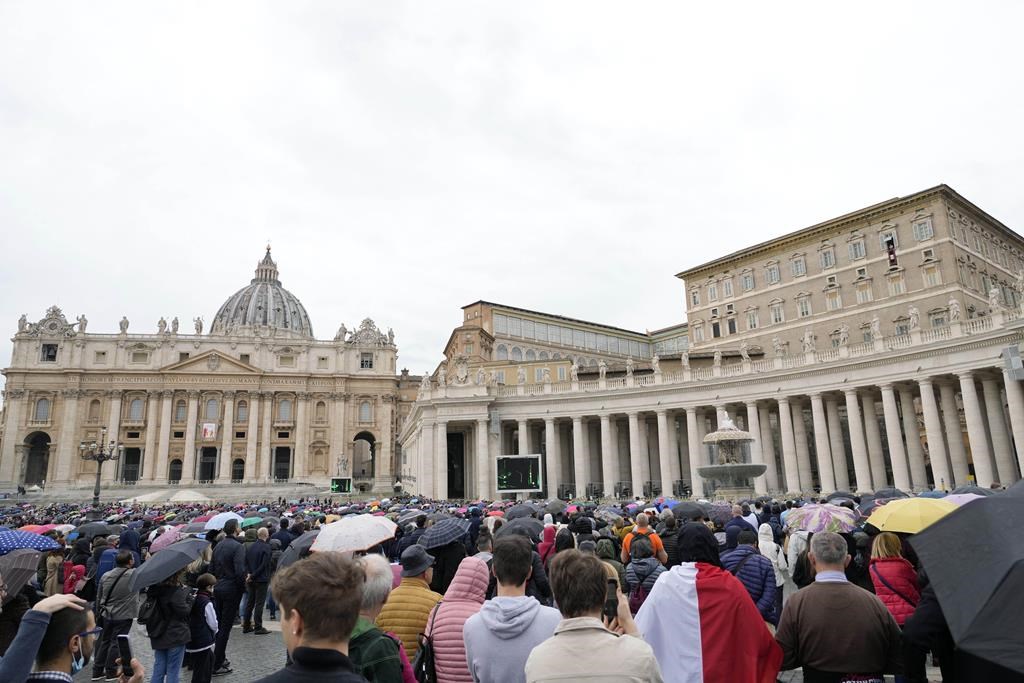The College of Cardinals will convene on May 7 to choose a successor for Pope Francis. Reports have suggested that 133 of the 135 eligible cardinal electors will attend the papal conclave. A two-thirds majority is required to elect the new pope, also known as the Bishop of Rome.
How long do papal conclaves typically last? No more than a few days on average. “The longest conclave in the modern era lasted five days,” Aryn Baker wrote in Time Magazine on May 6, “but the past two, to elect Pope Francis in 2013 and Pope Benedict in 2005, lasted two days each.”
There have been some exceptions to the rule. In particular, the final papal election that begat the modern papal conclave went on for an astonishing period of time. Nearly three years, if you can believe it!
Let’s revisit this fascinating moment in papal history.
Pope Clement IV served from Feb. 5, 1265 to Nov. 23, 1268. Upon his death, 19 of the 20 eligible cardinals gathered in the Duomo di Viterbo (Viterbo Cathedral) to choose his successor. Since the previous papal election had lasted less than four months – Oct. 12, 1264 to Feb. 5, 1265 – the likely assumption would have been that this one followed a similar pattern.
It turned out to be quite the opposite.
The 1268-1271 papal election witnessed the highest amount of political infighting in the history of the Roman Catholic Church. On one side were the French Angevin cardinals, established by Pope Urban IV and loyal to the King of Naples and Sicily, Charles I of Anjou. (Of interest, Clement IV was both Urban IV’s successor and the pope who crowned Charles I.) The other side was composed of mostly Italian cardinals, along with a Hungarian and English cardinal, who wanted to prevent a French pope from being elected.
The divisions between the French and non-French cardinals grew intense. So much so, that several parties and factions were created during this election process. Richard Sternfeld’s 1905 book, Der Kardinal Johann Gaetan Orsini (Papst Nikolaus III) 1244-1277, suggested there was a Angevin party (pars Caroli), Ghibeline party (pars Imperii), Orsini faction and Annibaldi faction. Two blocs may have also been created, with Orsini aligned with pars Caroli and Annibaldi with pars Imperii.
This produced a stalemate that just couldn’t be resolved.
More than 137 ballots were conducted. Two cardinals died during this election process. Several unverified accounts suggested that Philip Benizi, general of the Servite Order, came close to being elected. Saint Bonaventure was apparently proposed, too. The cardinals eventually left Duomo di Viterbo and sequestered at Palazzo dei Papi di Viterbo (Palace of the Popes in Viterbo), but the change of venue accomplished nothing.
Impatience was developing outside the gathering of the cardinals, too.
CBS Evening News suggested on May 5 that “frustrated townspeople locked the cardinals in the palace, and reduced their meals to bread and water.” It didn’t stop there. “The roof of the palace was removed, exposing the cardinals to the elements.” Some accounts have suggested that Charles I of Anjou was the one who orchestrated the removal of food and the palace roof. Then again, Onofrio Panvinio, an Italian Augustinian friar, wrote an account that pointed to Cardinal John of Toledo as the one who removed the roof.
We’ll never know the answer for sure.
The papal election finally reached a conclusion after King Phillip III of France and other rulers expressed their displeasure and put pressure on the cardinals. A committee of six cardinals took control of the decision-making process on Sept. 1, 1271. Sternfeld wrote that it was made up of two cardinals in the Orsini faction (Giovanni Gaetano Orsini and Giacomo Savelli), three cardinals in the Ghibeline party (Simone Paltinieri, Ottaviano Ubaldini and Guy de Castella) and Cardinal Riccardo Annibaldi. The Angevin cardinals were nowhere to be found.
The committee finally elected Teobaldo Visconti, who was engaged in the Ninth Crusade at Acre in Palestine with King Edward I of England, to be the new pope. It was the first historical example of a “compromise” candidate winning a papal election. After some initial hesitation, Visconti accepted this new role. He arrived in Viterbo on Feb. 12, 1272, and became Pope Gregory X.
It had taken two years and nine months to reach a decision.
The new Pontiff wanted to ensure that future papal elections didn’t go through the same process. Gregory X promulgated the papal bull Ubi periculum on 7 July 1274, which established the papal conclave. If this gathering “could not reach a decision within three days,” John L. Allen, Jr. wrote in Conclave, “they were to be reduced to one plate only at lunch and dinner instead of the customary Italian two-plate meal, pasta followed by meat. After five days of this, the rations were to be cut again, this time to bread, water, and wine, until the cardinals elected a pope.”
While Gregory X’s Ubi periculum was incorporated into canon law by Pope Boniface VIII in 1298, these restrictions aren’t followed to the letter in modern papal conclaves. At the same time, it ensured the College of Cardinals always understood that time was of the essence when electing a new pope. It’s a lesson that will surely be followed by this year’s papal conclave. We will see white smoke in the sky before long.
Michael Taube, a longtime newspaper columnist and political commentator, was a speechwriter for former Canadian prime minister Stephen Harper.






